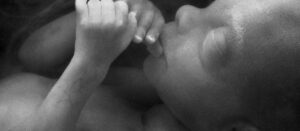The question of abortion hinges on the personhood of the preborn. Science confirms that life begins at conception—but what defines human personhood? Can we call the preborn persons, or are they merely non-person ‘fetuses’ with only a conceptual capacity for eventual personhood? If the former, abortion ends a life, but not a human one. If the latter, abortion kills a human being.
Some argue that personhood begins with a newborn’s first oxygenated breath, citing Genesis 2:7, “Then the Lord God formed the man of dust from the ground and breathed into his nostrils the breath of life, and the man became a living creature.” This is a bad interpretation, in my opinion.
Whether we agree or disagree on Adam as a historical man, he was and is a symbol of mankind; his name, Adam, means “humankind” in Hebrew. The formation of Adam’s body from dust and the filling of it with God’s breath is so much more than physical oxygen in Adam’s lungs—it is an allegory for life breathed into the whole human race.
The breath of life still belongs to the One who gave it—it is continuous and uninterrupted. Its continuity is most clear in fertilization: gamete cells of two, separately alive people join and create in an instant a genetically unique human being. Life never ended; it continued from two lives to one. From Adam to new zygote, God’s breath of life for humanity never paused.
To assert that life begins with a literal first oxygenated breath strips God of his authority over life. It hands the authority over to us, his mere creations.
So Genesis 2:7 establishes the life of humankind from conception, and from Adam we must move to consider Jesus Christ.
The Word became flesh in Mary’s womb, a miraculous conception worked out by the Holy Spirit. Jesus’ life from Heaven to the womb did not end or cease—he was fully God and fully zygote, fully embryo, fully fetus, fully infant, fully child, and fully man. Jesus in the womb is the Jesus who was and is and is to come.
So to affirm fetal personhood, we need only look to Jesus. Jesus Christ is the same yesterday, today, and forever (Hebrews 13:8)—the risen King who sits in glory at the right hand of the Father is the same humble servant who took on every moment of human life and biological development from conception to age thirty-three.
Jesus in his earthly life was the physical man in whom the fullness of God was pleased to dwell (Colossians 1:19). To reject Jesus’ fetal personhood is to reject his ‘yesterday, today, and forever’ sameness and forget his physical body conceived and formed by the Holy Spirit.
What’s more, the first human to celebrate Jesus was a human in the womb: John the Baptist. Preborn John in Elizabeth’s womb kicked for joy in the presence of preborn Jesus in Mary’s. John’s celebration confirms the spirited life and personhood of fetal Jesus. A fetus was the very first to receive the gospel and rejoice (Luke 1:41-44).
In sum, the breath of life is not the first physical breath we take, it is the breath breathed by God into humankind, passed on from Adam through all generations. The breath of life begins at the moment of conception—not a moment of human life is omitted from God’s sovereignty. All humans possess God’s Image from fertilization. Jesus’ incarnation begs the personhood of the unborn be seen, too, as he, our incarnate Savior, took on zygotic, embryonic, and fetal flesh.
Abortion violently kills a human being, a person made in the Image of God.






